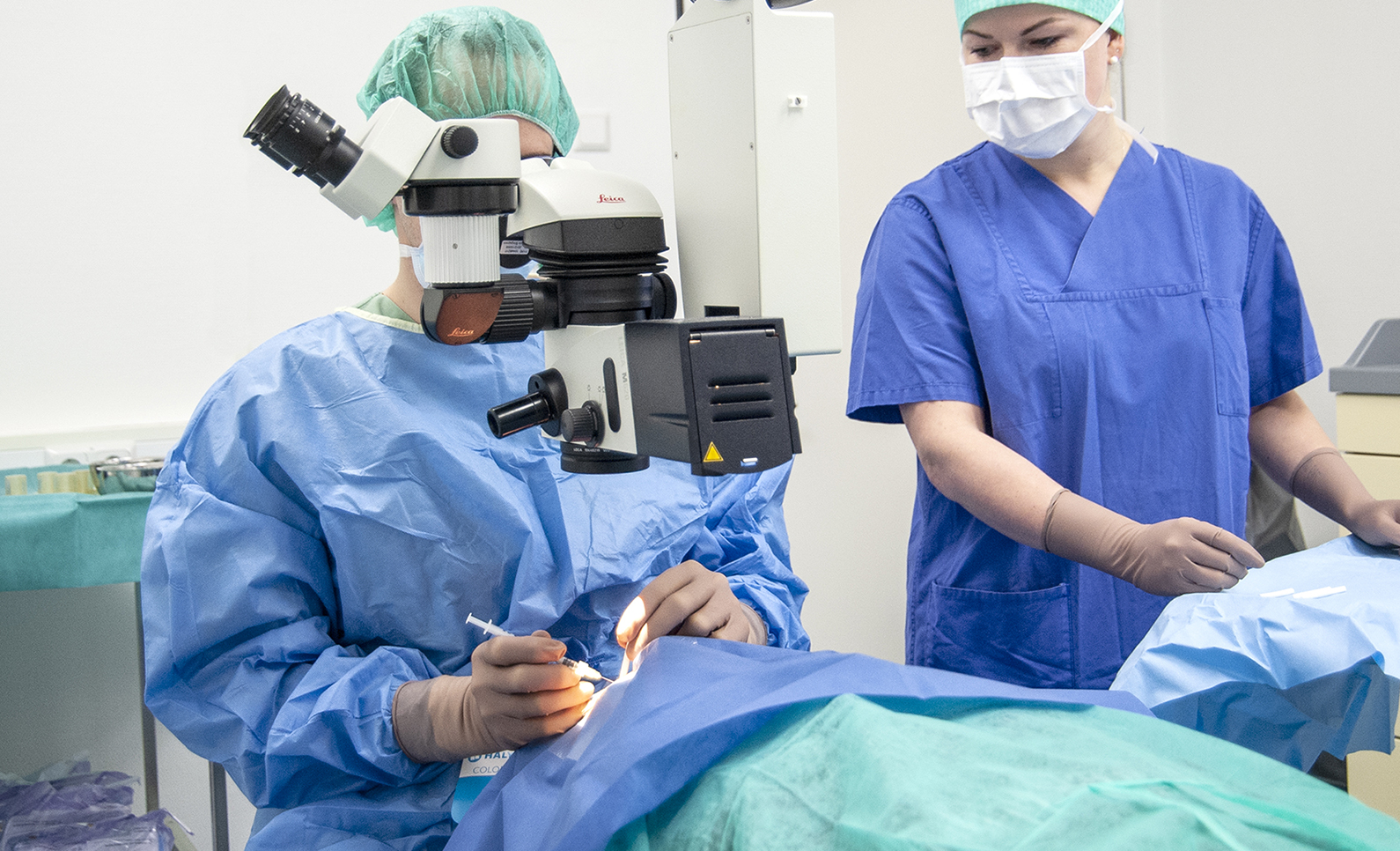The frequency increases with increasing age. A distinction is made between two forms, the more frequent dry and slowly progressing macular degeneration and the wet, often rapidly progressing form.
The dry macular degeneration
At the beginning of the "dry" form of AMD, drusen form on the macula. These are small, yellowish deposits under the retina. Vision is often only slightly restricted. Later, the sensory cells of the retina and their nutritional cells perish and visual acuity deteriorates significantly. In contrast to wet degeneration, however, it progresses much more slowly. The dry macular degeneration can change into the wet form.
The wet macular degeneration
In "wet" macular degeneration, small vascular buds grow under the retina in the area of the glands. These newly formed vessels are leaky and lead to swelling of the center of the retina (macular edema). It can also bleed to a greater or lesser extent. Eventually the center of the retina is transformed into a connective tissue scar. The photoreceptor cells perish. The “wet” macular degeneration can sometimes progress very quickly, but it also eventually comes to a standstill.

